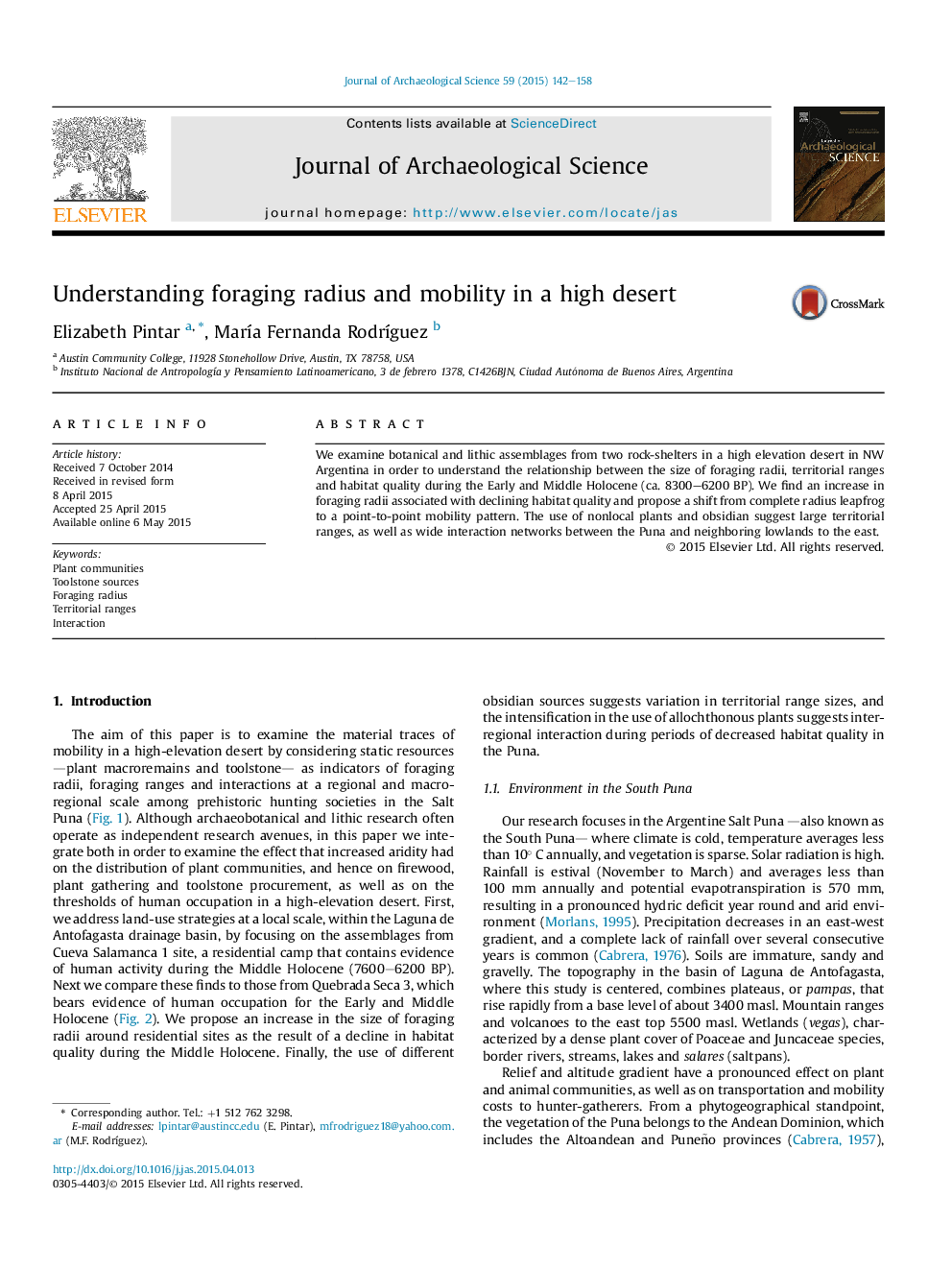| Article ID | Journal | Published Year | Pages | File Type |
|---|---|---|---|---|
| 1035363 | Journal of Archaeological Science | 2015 | 17 Pages |
•Greater variety of plants and toolstone used with declining habitat quality.•Foraging radius increased from 3 to 7 km during the Middle Holocene.•Logistical radius ranged between 8 and 35 km.•Shift from complete-radius leapfrog to point-to-point mobility pattern.•Lower habitat quality is associated with a greater use of non-local materials.
We examine botanical and lithic assemblages from two rock-shelters in a high elevation desert in NW Argentina in order to understand the relationship between the size of foraging radii, territorial ranges and habitat quality during the Early and Middle Holocene (ca. 8300–6200 BP). We find an increase in foraging radii associated with declining habitat quality and propose a shift from complete radius leapfrog to a point-to-point mobility pattern. The use of nonlocal plants and obsidian suggest large territorial ranges, as well as wide interaction networks between the Puna and neighboring lowlands to the east.
